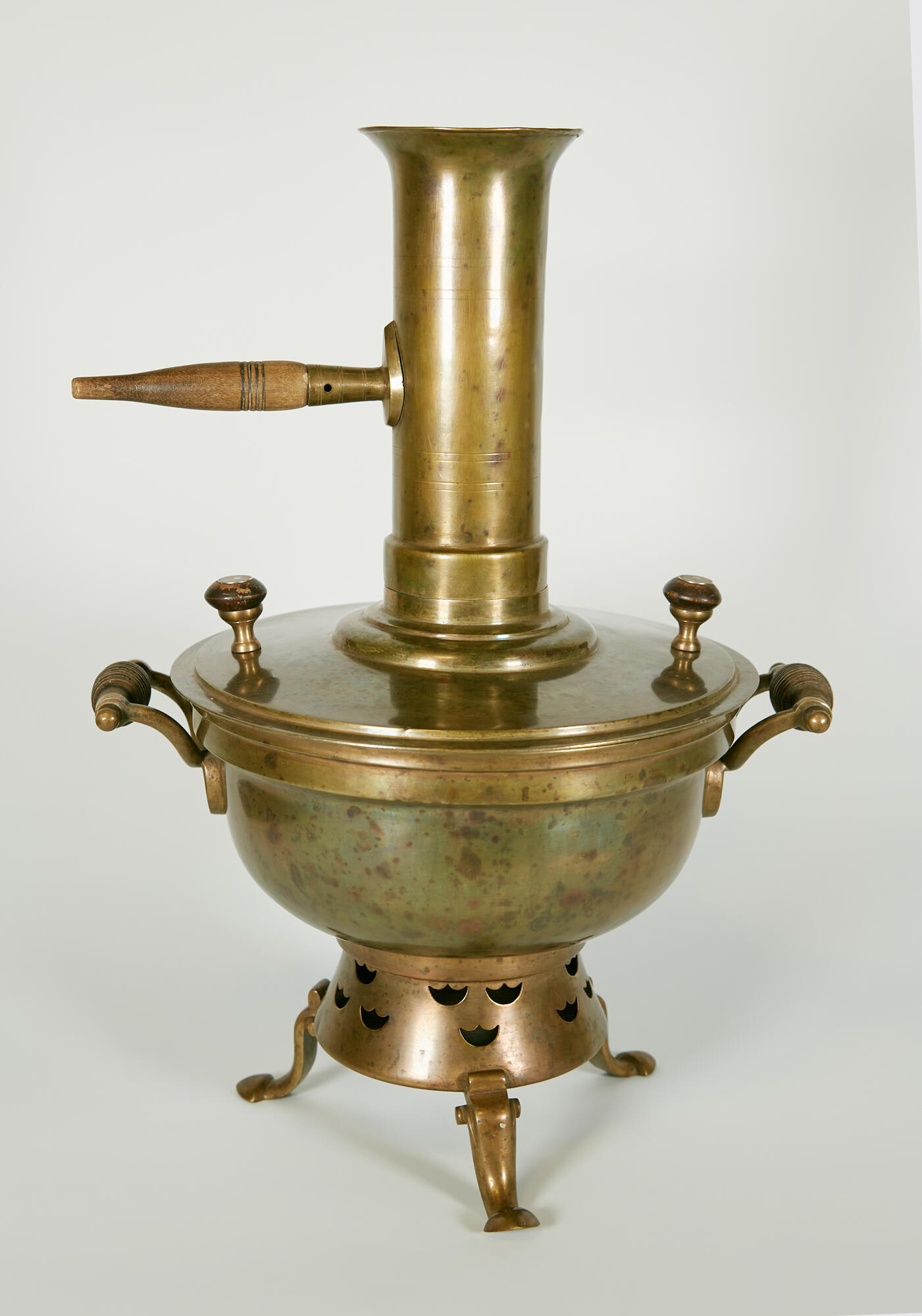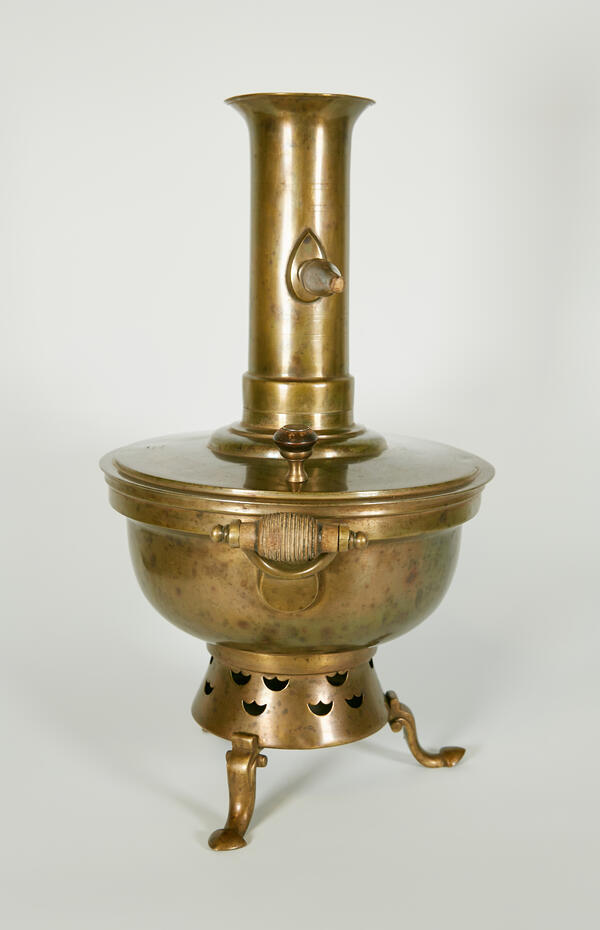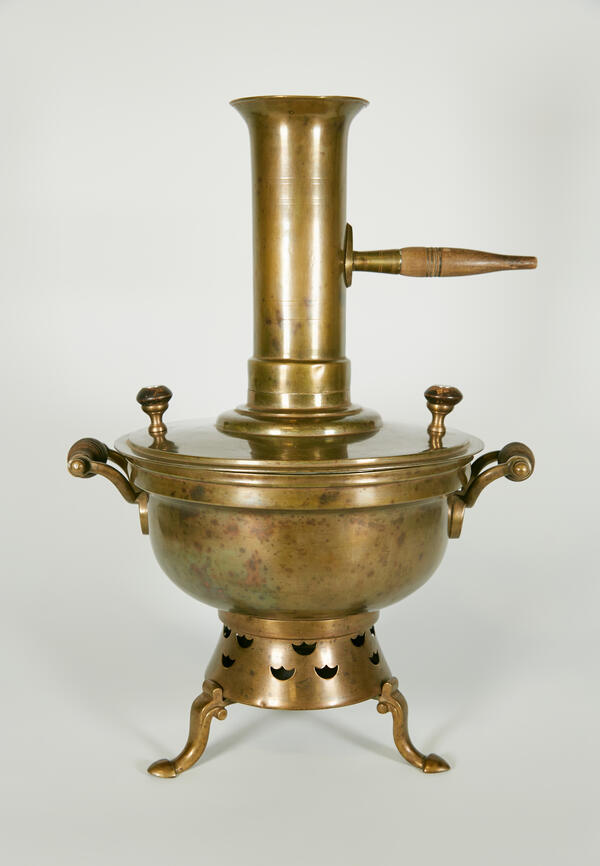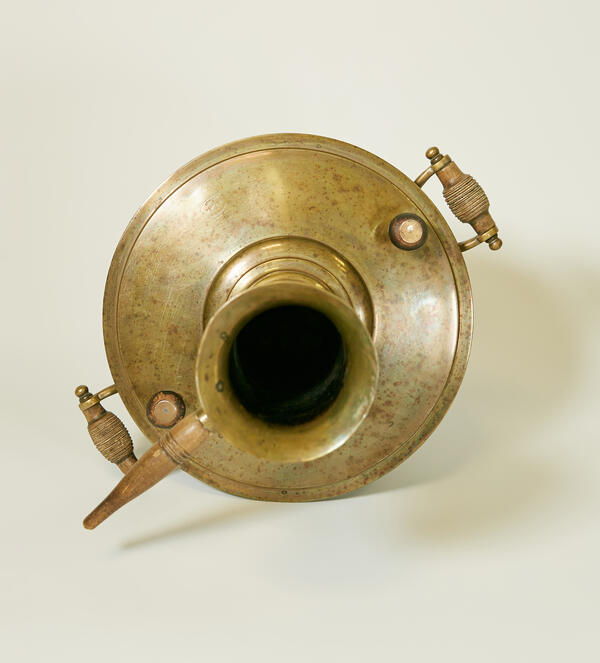The collection of the Museum of Moscow presents the products of the most famous samovar centers of pre-revolutionary Russia: Tula (V.S. Batashev factory, Factory of V.S. Batashev’s Heirs, P.N. Fomin Steam Samovar Factory, S.V. Filin Samovar Factory, E.A. Vanykin Factory, E.V. Salishchev Factory, Shemarin Brothers Partnership, Vorontsov Brothers Factory, etc.), Moscow (“Konstantin Letz”, I.A. Alenchikov and N.S. Zimin Partnership, “I.A. Peking”, “A. Abramov”), St. Petersburg (F.N. Dubinin Factory and F.N. Kondratiev factory). In addition to the classic samovar, there were also samovar-sbitenniks (sbiten — popular Russian drink with herbs and honey), samovar-kettles, samovar-coffee pots, bouillottes (with a burner below the samovar), as well as samovar-kitchens. A samovar-kitchen was compact, squat and had a stable foundation. Some models had compartments making it possible to cook several dishes at the same time. All this made the samovar-kitchen extremely convenient and indispensable on the road.
There is a stamp of the Alenchikov and Zimin factory on the lid of the presented samovar. Moscow merchants Ivan Alenchikov and Nikolai Zimin owned a copper and brass factory located in the Vladimir Governorate, near the Kirzhach station. The factory existed from 1840 to 1917, most of its workers were engaged in the manufacture of samovars, which were sent for sale to Moscow. The samovars of Alenchikov and Zimin were distinguished by their quality and variety of models. They received numerous awards at domestic and foreign exhibitions.
The heyday of the samovar — a symbol of hospitality and an indispensable attribute of tea drinking — was in the 19th and 20th centuries. Legend has it that it was Peter I who brought the samovar to Russia from Holland. But according to reliable sources, samovars appeared in Russia half a century after the death of the first Emperor of Russia.
Although Tula is considered by many people to be the birthplace of the samovar (there is even a saying “nobody goes to Tula with their own samovar”), historical documents indicate that the first ever samovar was made in the Irgin Factory in the Western Urals. The first recorded mention of a 16-pound tinned copper samovar made at the Irgin Factory is dated 1740. Whereas the first Tula samovar was mentioned in written documents in 1746.




